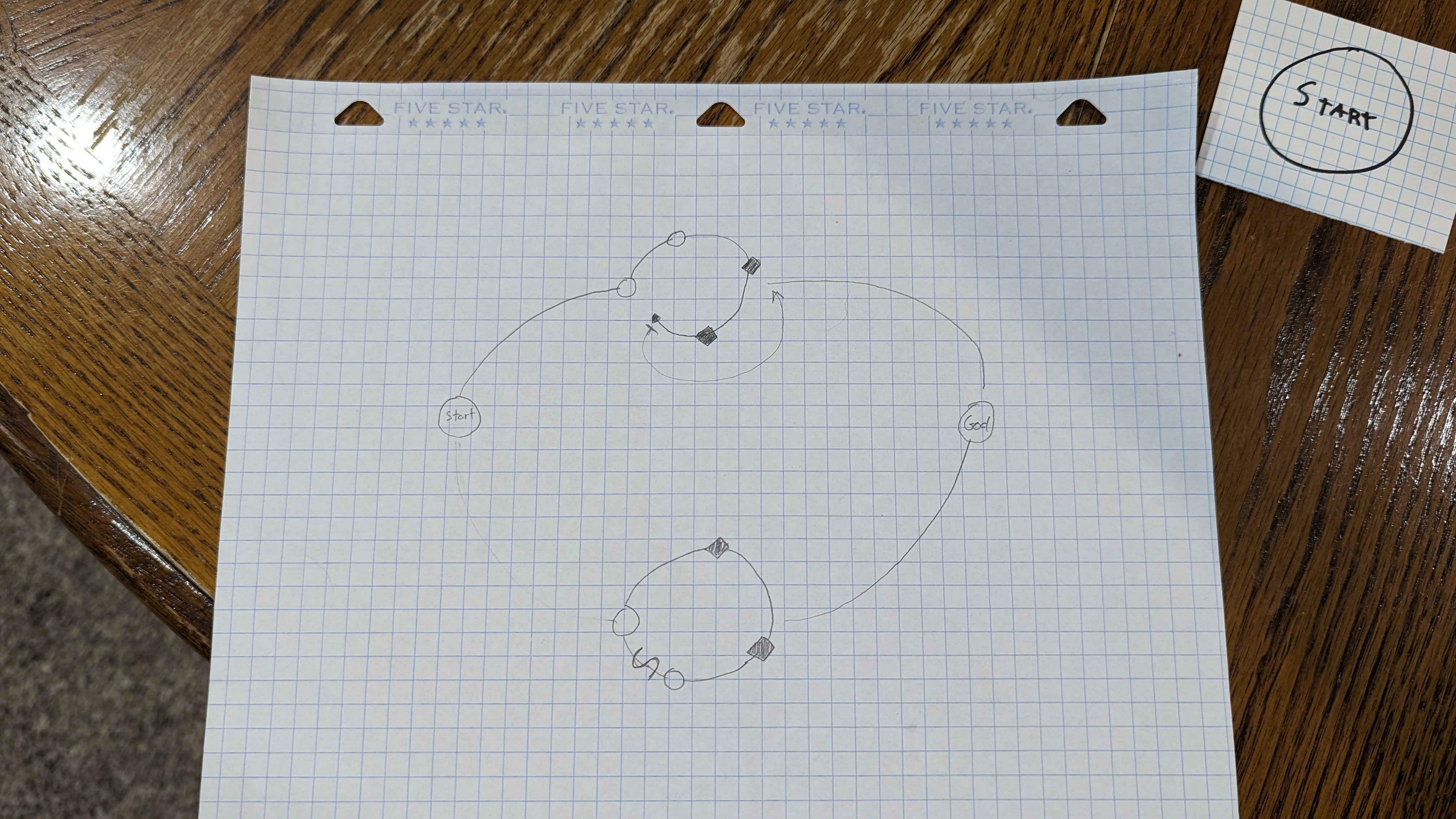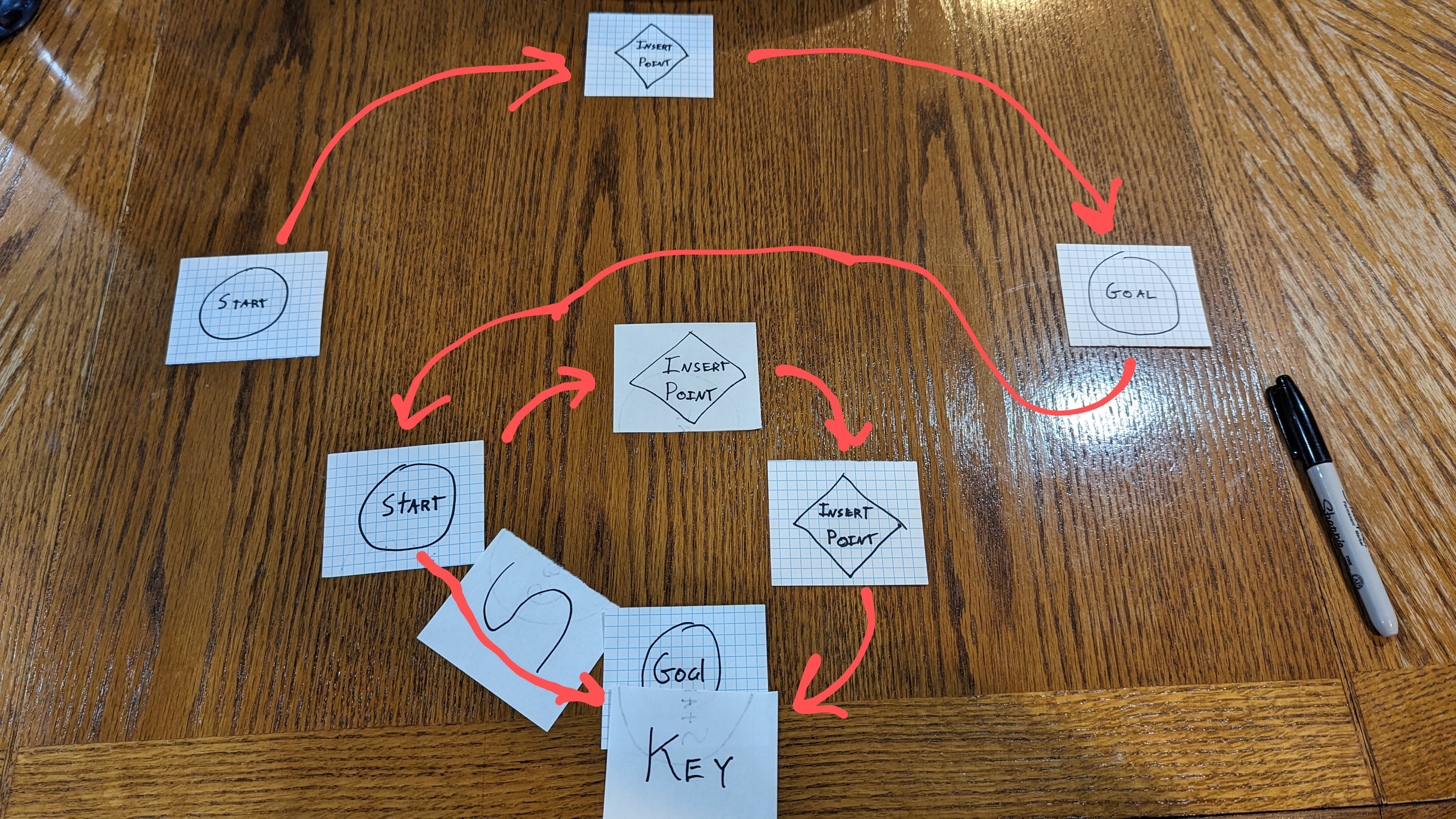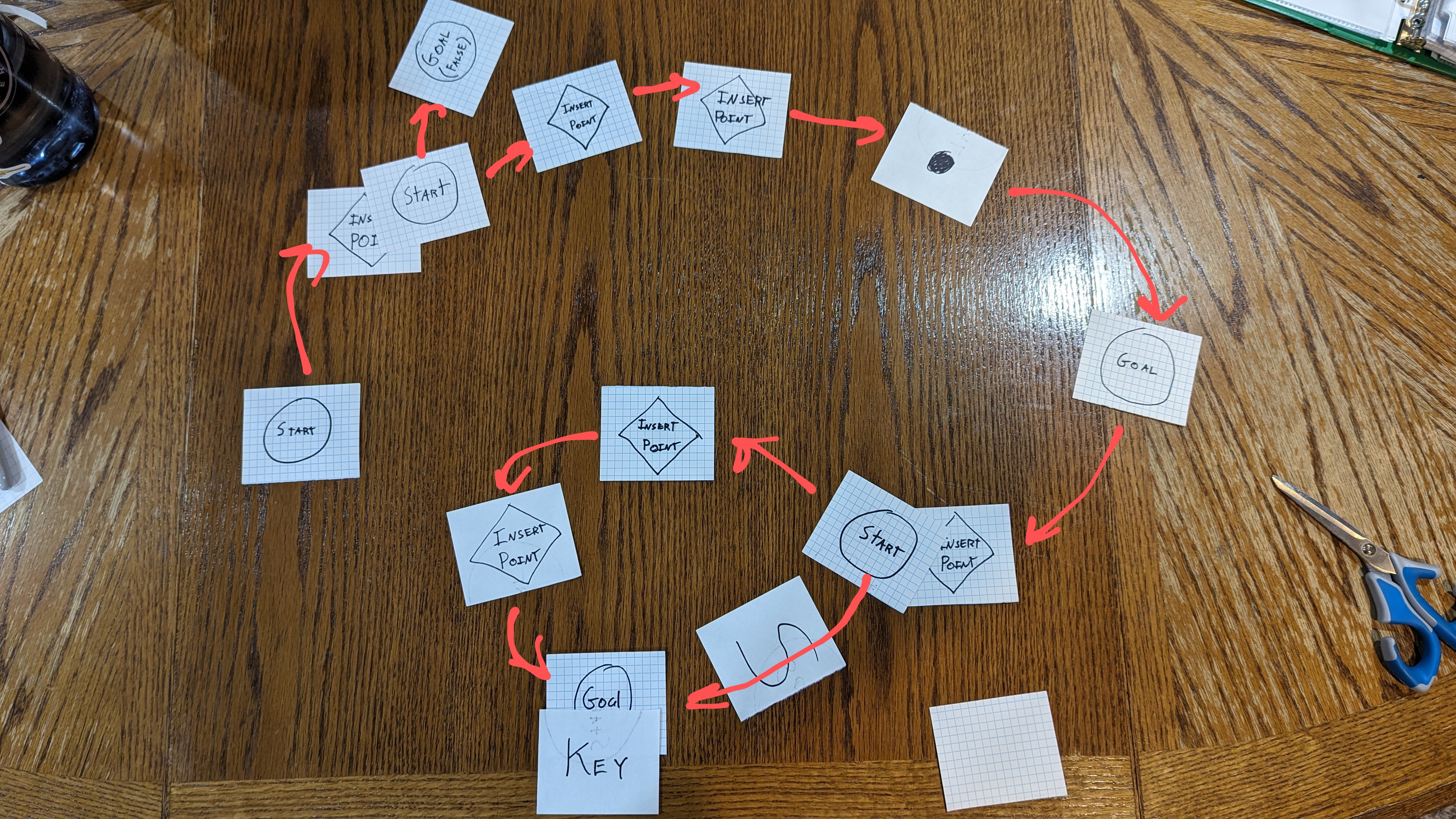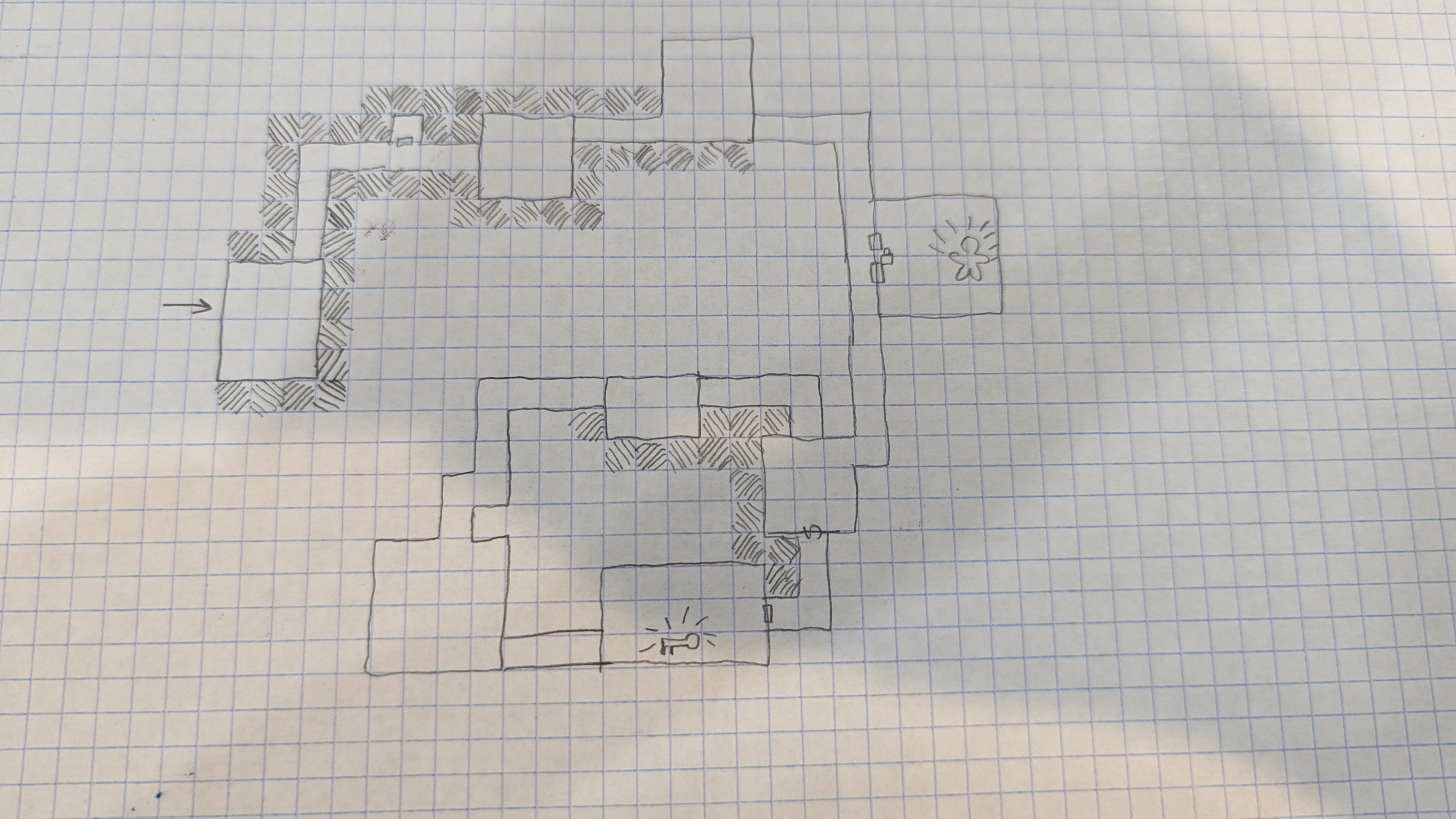Cyclic Dungeon Generation
For a while, I had many people tell me to try using the Cyclic Dungeon Generation method as found and detailed on itch.io by Sersa Victory. For a while, I would read the document and get confused on how to envision the end result or how the dungeon worked. What I am going to show is not the BE ALL END ALL method, as this probably work differently for other people. So, I will show some images, describe the cycles drawn, and then how I pieced it together to get a final result. The book Cyclic Dungeon Generation has a wonderful walk through and an example dungeon using that result. I suggest reading it once or twice, then also trying to do your own while following the tutorial.
Things you’ll need
- Index Cards 3x5
- Marker or Pencil
Drawing Cycles?
Yep. I made some cards to draw cycles instead of rolling them. One because I had a deck of blank cards to work with, and cards are fun sometimes. Here’s what they look like.

These are all found in the book originally.
So I followed the tutorial on Page 6-7. I drew the first cycle, then at the first two insertion points, I drew two other cycles. I felt that was enough to start with to get the feel for doing this manually.
The complete cycle flowchart
After I drew my cards for the cycles, I wrote them on a piece of paper and drew it as demonstrated in the book. I drew Cycle 11, Cycle 10, and Cycle 03.

This is still a little hard to mentally visualize for me as I know I’m going in a circle, but the start is over there? Then where is the goal? How do I go back? Hopefully visually mapping it helps.
Mapping the first cycle
I took my index cards and tore them in half (or cut them if you’re fancy). I then wrote down the words as shown on my cycle flowchart. I then laid the card halves out as shown.

This works for me, and helps me get the initial flow down. What is hard to do whend drawing on paper or using digital tools is knowing that the initial cycle’s goal gets stretched out as you insert more cycles. So, let’s insert a second cycle.
Inserting the second cycle
Now we’ll insert a second cycle. For this, I chose the bottom one with the secret path to our key. So, I moved the Goal back, and replaced Insert Point with the cycle.

I decided to rotate the cycle as well so that the start made sense, and the two insertion points we’re not using get turned into extra rooms for encounters or breather rooms. Here, you should see the loop where the key is and kind of visualize where the logical flow of the dungeon goes.
Inserting our final cycle
For our final (second) cycle, I took the cards and elongated the cycle making it a line instead. To me it made more sense to do this. In the final result you’ll see kind of what I was thinking and I’ll explain more.

The cycle had the “true goal” which was really just editing the cycle in this case, but if it were the key insertion point, then the true goal would’ve been the key.
Final Results
After I laid out the index cards and maneuvered them so that they made sense on my table, I then drew this on paper. Some liberties were taken.

You’ll see the the entry point, then we go to the left, following the hallway and are presented with our first “False Goal”. After I drew this, did the hatching, I realized I should’ve made the false goal room similar to the actual goal room and then have a surprise, or something. Live and you learn. Then you make your way down two more rooms that may have encounters or lore spouts. The final boss, BUT, the doors are locked, so we need the key! Our adventurers then would need to traverse the halls more, and either percept the hidden path or traverse the other two rooms and then perform some sort of task to get the key. I would also then show the hidden path as a viable route similar to Skyrim showing that the Players should always search or just as a repreive from having to go all the way around. Thenn they can go back and unlock the boss doors, and let the murdering ensue.
Final Thoughts
I do enjoy the Cyclic Dungeon Generation method. It was a little abstract for me at the onset because I hadn’t thought about dungeons in this way even though I had seen them in other video games like Dark Souls, Legend of Zelda, and many others. Doing this manual large blown out way helped me to visually identify what it was actually doing and then draw it. I also found it a little easier than doing this in a drawing tools like Excalidraw. Go pick up the book, read it out loud to yourself so you see, say, and hear it and then practice the cycle method. Good luck!